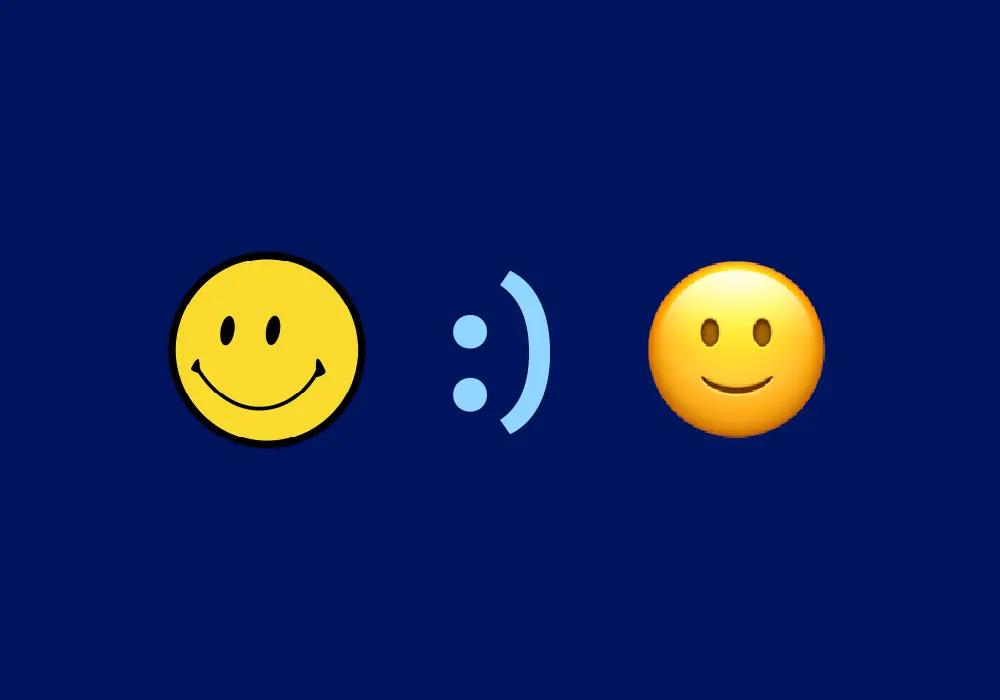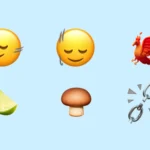The Origins of Emojis: A Simple Start
The journey of emojis began in the late 1990s in Japan, where Shigetaka Kurita, a member of NTT DoCoMo’s i-mode team, developed the first set of 176 emojis. These early designs were simple, pixelated icons meant to convey emotions, weather conditions, or activities in a visual way. At the time, communication on mobile phones was constrained by character limits, making emojis an efficient way to express more with less.
The initial success of emojis in Japan sparked interest globally. Companies like Nokia and Samsung began incorporating similar symbols into their devices. However, the limited compatibility between platforms kept emojis from gaining universal appeal until much later. Early emojis were seen as a tool for teenagers and young adults, who used them to enhance text-based communication with visual cues.
Globalization of Emojis: A Universal Language
Emojis gained worldwide recognition with the release of Apple’s iPhone in 2007. The inclusion of an emoji keyboard in iOS 5 in 2011 was a game-changer, making emojis accessible to a global audience. Unicode Consortium played a pivotal role by standardizing emojis, ensuring they would look similar across different platforms and devices.
As emojis became more diverse, they transcended linguistic and cultural barriers. Symbols like the heart, smiley face, and thumbs-up became universal ways to express emotions, regardless of language. This accessibility turned emojis into a form of digital shorthand that people of all ages could use to communicate.
Age Groups and Emoji Usage
Teenagers: The Pioneers of Emoji Expression
Teenagers were among the earliest adopters of emojis and remain one of the most creative groups in their usage. For this age group, emojis serve as tools to enhance self-expression and create a sense of identity within digital spaces. Teens often use emojis to signal humor, sarcasm, or flirtation in their texts.
In terms of sexual preferences, teenagers tend to use emojis like the peach (🍑), eggplant (🍆), and water droplets (💧) as playful and suggestive symbols. These emojis have become part of a shared cultural lexicon, making them easily recognizable in specific contexts. Their ability to adapt and repurpose emojis shows the group’s innovation in digital communication.
Young Adults: Emojis as Tools for Connection
Young adults, typically in their 20s and 30s, use emojis as a way to add emotional depth to their messages. This demographic values the ability to convey tone and intention, which can often be lost in text-based communication. Emojis help bridge this gap, making messages feel warmer and more personal.
When it comes to sexual preferences, young adults may use emojis to initiate or navigate romantic and sexual conversations. For example, the red heart (❤️) and fire emoji (🔥) are often employed to express attraction or passion. This group’s usage is characterized by a balance between playfulness and intentionality, reflecting their more mature understanding of relationships.
Middle-Aged Adults: Adapting to the Emoji Era
For middle-aged adults, emojis were initially a novelty but have become a practical addition to their digital communication. This age group often uses emojis sparingly, typically opting for more straightforward symbols like the smiley face (😊) or thumbs-up (👍). These choices reflect their desire for clarity and simplicity.
In romantic or sexual contexts, middle-aged adults might use emojis more conservatively. A red rose (🌹) or a winking face (😉) might be their go-to for expressing affection or flirtation. Their usage tends to prioritize subtlety over overt expression, aligning with generational norms.
Seniors: Discovering Emojis Later in Life
Seniors, while not native to the emoji phenomenon, have increasingly adopted them in recent years. For many, emojis offer a way to stay connected with younger family members and participate in modern communication trends. This group often uses emojis to convey basic emotions, such as happiness or gratitude.
Sexual preferences are rarely expressed through emojis in this demographic. Instead, seniors tend to focus on family-oriented symbols, like the heart or clapping hands (👏), emphasizing their roles as caregivers and mentors. Their emoji usage is less about innovation and more about maintaining social bonds.
Cultural Evolution of Emojis: Reflecting Diversity
One of the most significant milestones in the evolution of emojis was the push for greater inclusivity. In 2015, Unicode introduced skin tone modifiers, allowing users to personalize emojis to better represent themselves. Subsequent updates included symbols for different professions, gender identities, and cultural practices, such as hijabs and same-sex couples.
These changes have helped make emojis a more accurate reflection of global society. They also highlight how digital communication tools are evolving to meet the demands of a more inclusive world. Emojis have become not just symbols of emotion but also representations of identity and community.
Emojis as Modern Art and Marketing Tools
Artistic Transformations
The rise of emojis as a cultural phenomenon has inspired artists to incorporate them into their work. From emoji-themed installations to digital art pieces, these symbols have become a medium for exploring themes like globalization, technology, and human connection. Emojis have also appeared in fashion, music videos, and even as NFTs (non-fungible tokens), showcasing their versatility as a form of modern art.
Marketing and Branding
Businesses have also capitalized on the popularity of emojis, using them in advertising campaigns to connect with younger audiences. Emojis can convey a brand’s tone and personality while making messages more relatable and engaging. For instance, Domino’s Pizza introduced a feature allowing customers to order pizza by tweeting a pizza emoji (🍕), blending convenience with creativity.
The Future of Emojis: What Lies Ahead?
As technology continues to evolve, so too will emojis. The integration of augmented reality (AR) and virtual reality (VR) technologies could enable users to interact with 3D emojis in immersive environments. Artificial intelligence may also play a role in creating personalized emojis based on a user’s facial expressions or mood.
Moreover, the demand for inclusivity will likely drive the development of even more diverse and representative emojis. As digital communication becomes increasingly central to our lives, emojis will continue to adapt, ensuring they remain relevant and impactful.
Conclusion: More Than Just Symbols
The evolution of emojis is a testament to their power as a communication tool. From their humble beginnings as simple pixelated icons to their current status as a global cultural phenomenon, emojis have transformed the way we express ourselves in the digital age. They bridge generational gaps, reflect societal values, and even inspire art and commerce. As we look to the future, one thing is certain: emojis are here to stay, and their story is far from over.

